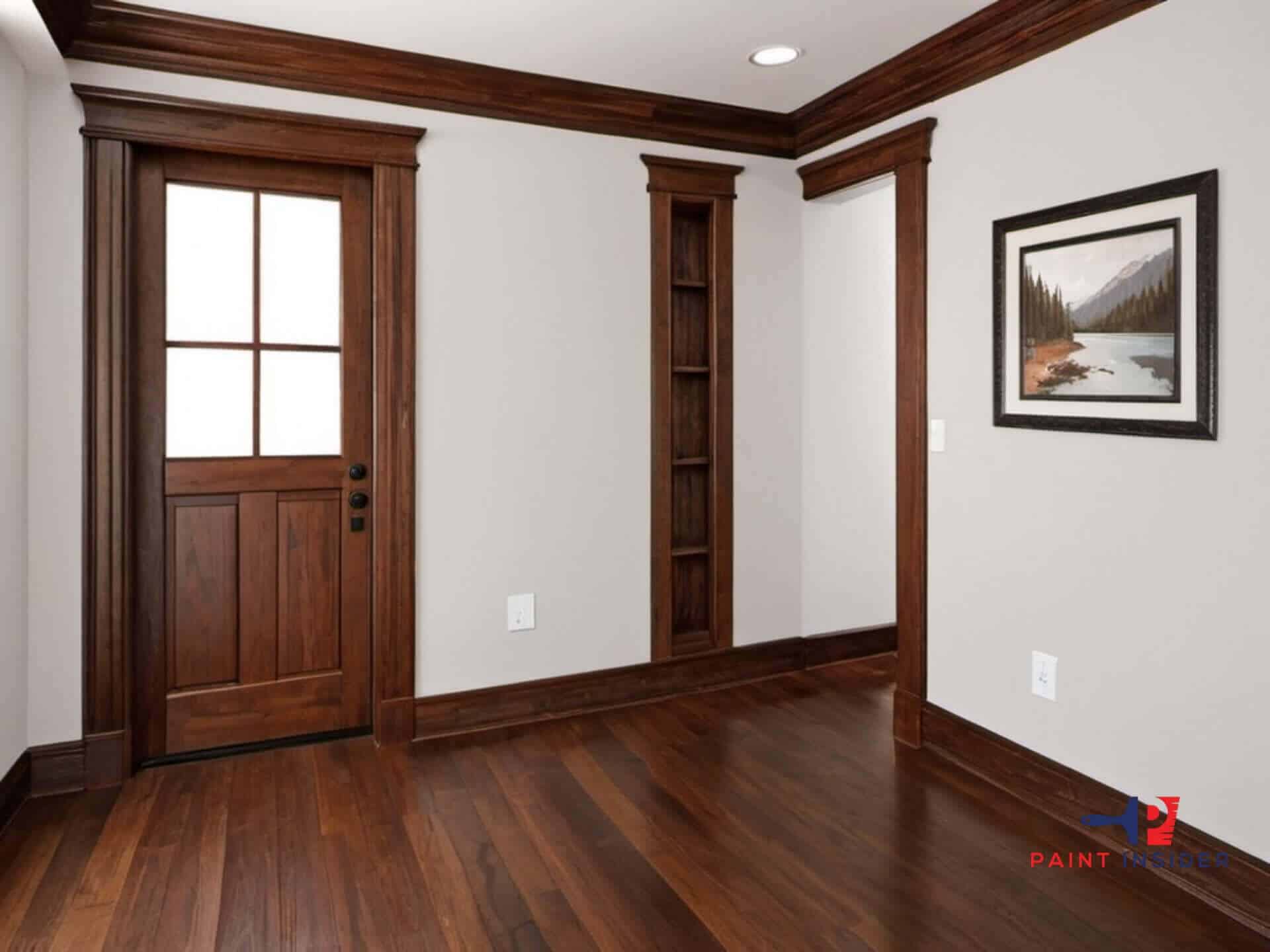When it comes to interior design, the choice of trim color can make or break the ambiance of a space, especially when paired with the timeless elegance of white walls. While white serves as a versatile canvas that invites creativity and style, selecting the right trim color can elevate your home’s aesthetic from ordinary to extraordinary. But what color trim for white walls truly enhances their brightness while adding depth and character?
In this article, we’ll explore 10 inspiring trim color ideas that compliment white walls beautifully, each bringing its own personality and flair. Whether you prefer subtle sophistication or bold contrast, these options will help you create a harmonious balance in any room. From classic shades that evoke traditional charm to modern hues that infuse vibrancy and energy, get ready to discover how simple yet impact full paint choices can redefine your living spaces. Join us as we delve into the world of color combinations that transform your home into a sanctuary of style!
Understanding White Wall Aesthetics
White wall aesthetics are a versatile design choice that can elevate any space, offering a blank canvas for personal expression and style. When considering color trim for white walls, the options go beyond classic contrasts to incorporate subtler shades that enhance the overall ambiance. Soft pastels or muted earthy tones can create warmth and depth, inviting an understated elegance that complements modern minimalism while adding layers to your decor.
Moreover, the choice of trim can significantly alter the perception of dimensions within a room. A dark trim against pristine white walls may introduce dramatic contrast but also adds sophistication and grandeur to larger spaces. Alternatively, pairing white walls with light gray or soft beige trim tends to maintain an airy feel while creating seamless transitions between surfaces perfect for smaller areas where continuity is essential. This harmonious blend not only accentuates architectural features but also fosters a serene atmosphere ideal for relaxation and creativity in homes or work environments alike.
Here are 10 of the best trim color ideas to match white walls, offering a range of styles from bold to subtle:
1. Black Trim
Choosing black trim for white walls creates a dynamic contrast that transcends basic color schemes, infusing spaces with a modern edge. The boldness of the black framing draws attention to architectural details and enhances the visual impact of your design. It’s an unexpected pairing that plays beautifully with different styles, from industrial chic to classic elegance, allowing your personality to shine through in striking ways.
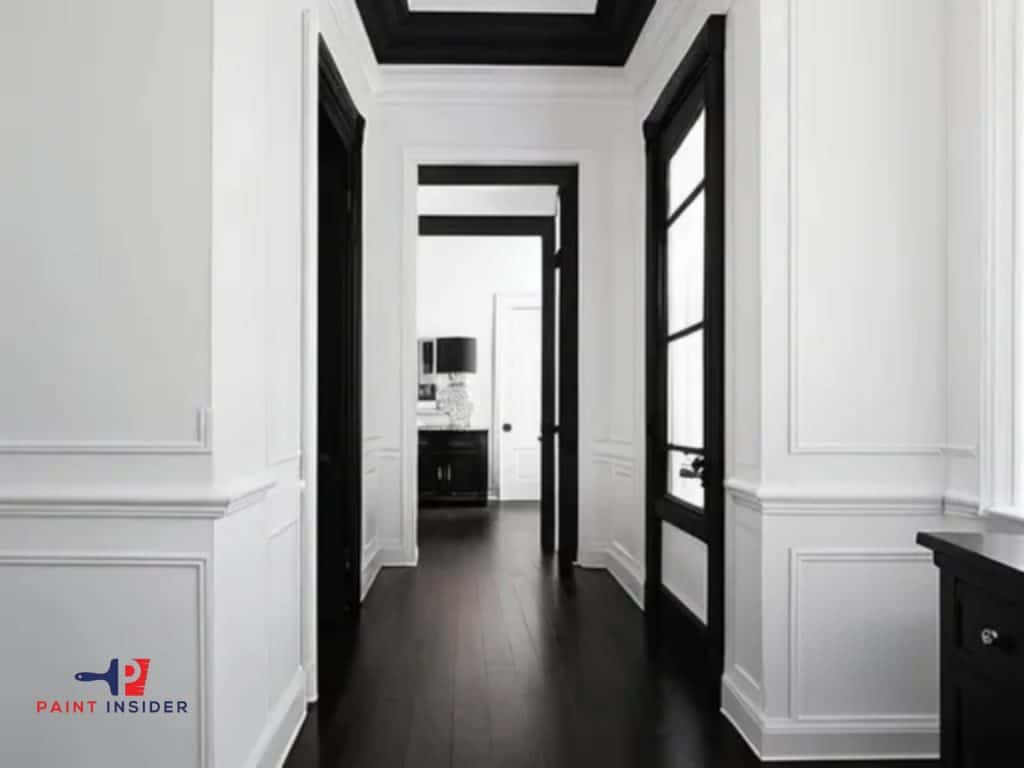
Black trim can serve as a unifying element when accessorizing your space. Incorporating other black accents like light fixtures or furniture can harmonize and create a cohesive aesthetic throughout the room. This refreshing approach adds sophistication while subtly elevating the overall ambiance, transforming ordinary settings into stylish retreats. As you ponder what color trim for white walls, consider this powerful duo; it’s not merely about contrasting colors but crafting an exquisite balance that captures both simplicity and sophistication effortlessly.
2. Soft Gray Trim
Soft gray trim for white walls introduces a serene elegance that can transform any space. The subtle contrast amplifies the brightness of the white, while the gentle hue of gray adds depth and dimension. This pairing creates an inviting atmosphere, making rooms feel simultaneously crisp and cozy perfect for both modern and traditional aesthetics.
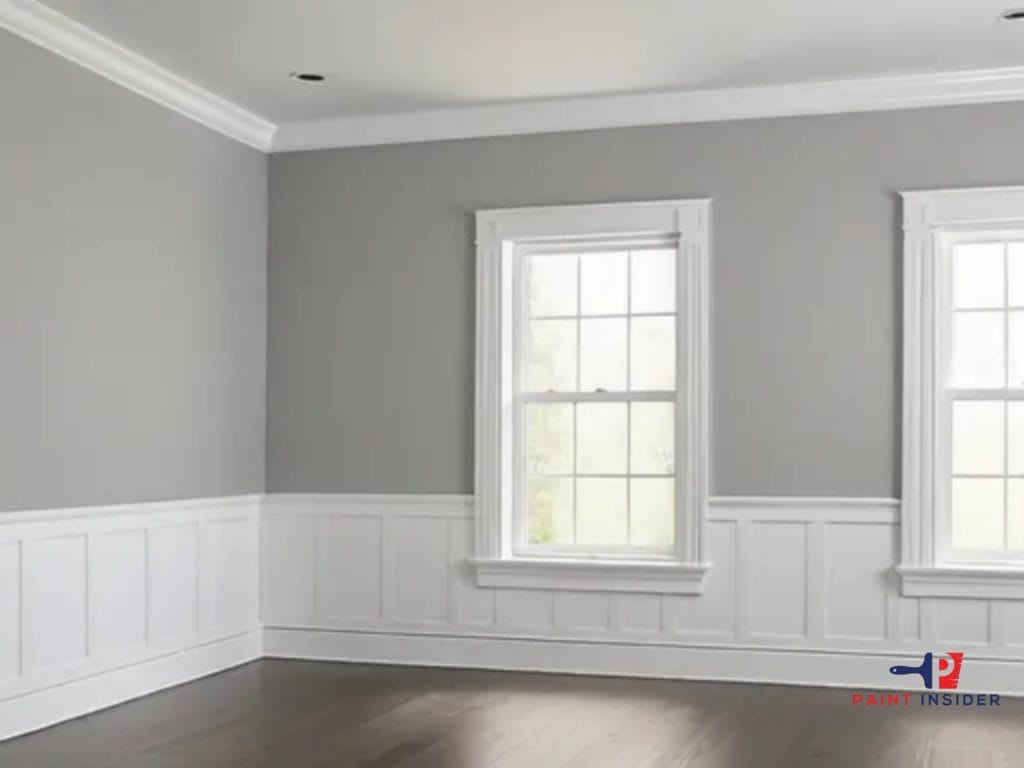
Moreover, the versatility of soft gray is unmatched; it complements natural wood tones beautifully and provides a calming backdrop for artwork or decorative elements. Whether you’re aiming for coastal chic or urban minimalism, this dynamic duo promises to elevate your design scheme gracefully. Imagine walking into a room where each element harmonizes effortlessly; that’s the magic of soft gray trim against brilliant white walls.
3. Charcoal Trim
Charcoal trim elevates white walls from a simple backdrop to an eye-catching statement, creating a sophisticated contrast that is hard to ignore. The deep, moody hue of charcoal not only grounds the brightness of white but also adds depth and dimension to any room, making it feel more inviting and intentional. Unlike traditional lighter trims that can sometimes wash out the vibrancy of your space, charcoal provides a striking frame that highlights architectural details while enhancing overall décor.

Incorporating charcoal trim invites versatility; it naturally complements both modern and classic design styles. Pairing this dark accent with bold artwork or vibrant furnishings amplifies visual interest and creates harmony throughout the room. This trend opens up exciting possibilities for color palettes, think jewel tones or muted pastels that benefit from the dramatic backdrop created by charcoal trim against white walls. Ultimately, it’s about invoking personality through color contrasts in ways you might not have considered before turning neutral spaces into unique showcases brimming with character.
4. Navy Blue Trim
Navy blue trim offers a striking yet sophisticated contrast when paired with white walls, infusing spaces with depth and character. The boldness of navy against the crisp backdrop of white creates a stunning visual impact, allowing each hue to enhance the other. This combination not only elevates the room’s aesthetic but also promotes a sense of calm elegance, often evoking maritime inspiration that can bring both serenity and a touch of adventure into your home.
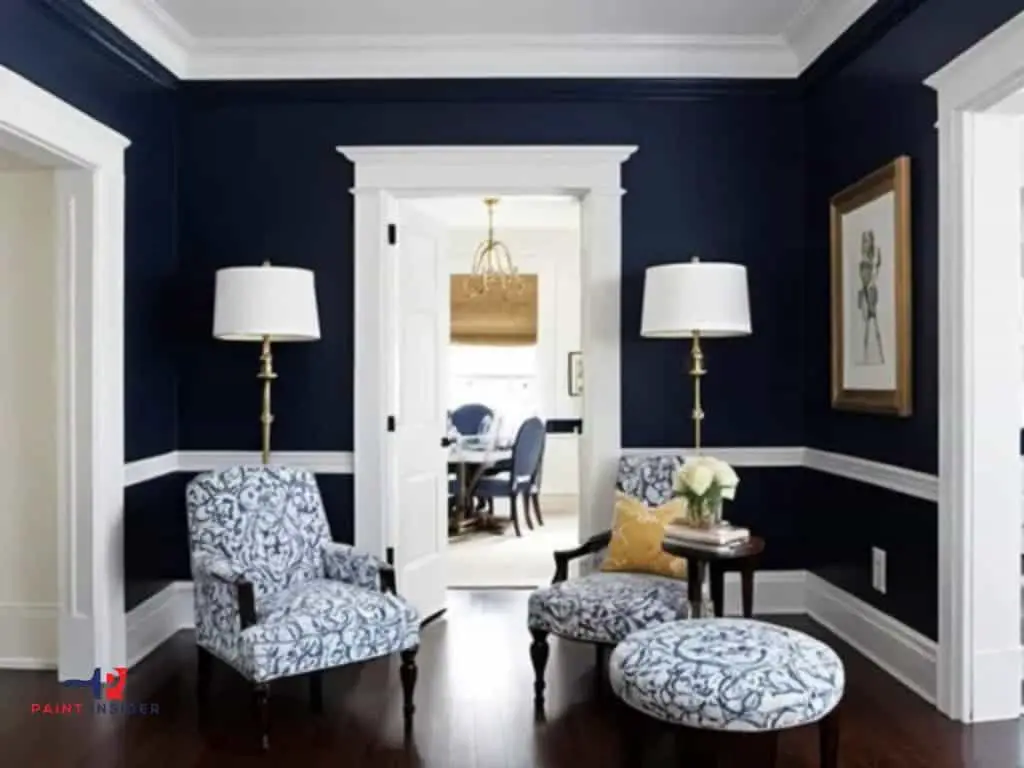
In addition to its dramatic flair, navy blue trim serves as an excellent grounding element in design. It frames windows, doors, and architectural details beautifully while highlighting them against the pure canvas of white. Consider incorporating this color scheme in various settings whether it’s for modern minimalist interiors or traditional spaces and watch how it transforms everyday settings into chic retreats. With the right balance and placement, navy trim helps redefine what color trim for white walls can achieve an inviting atmosphere that’s both refreshing and timeless.
5. Warm Taupe Trim
When it comes to selecting the perfect trim for white walls, warm taupe emerges as an unexpected yet striking choice. This neutral hue introduces a cozy depth, providing a seamless transition between your walls and accents. Unlike stark contrasts that can feel harsh or overly clinical, warm taupe wraps around the edges of your space like a gentle embrace, inviting comfort without sacrificing elegance.
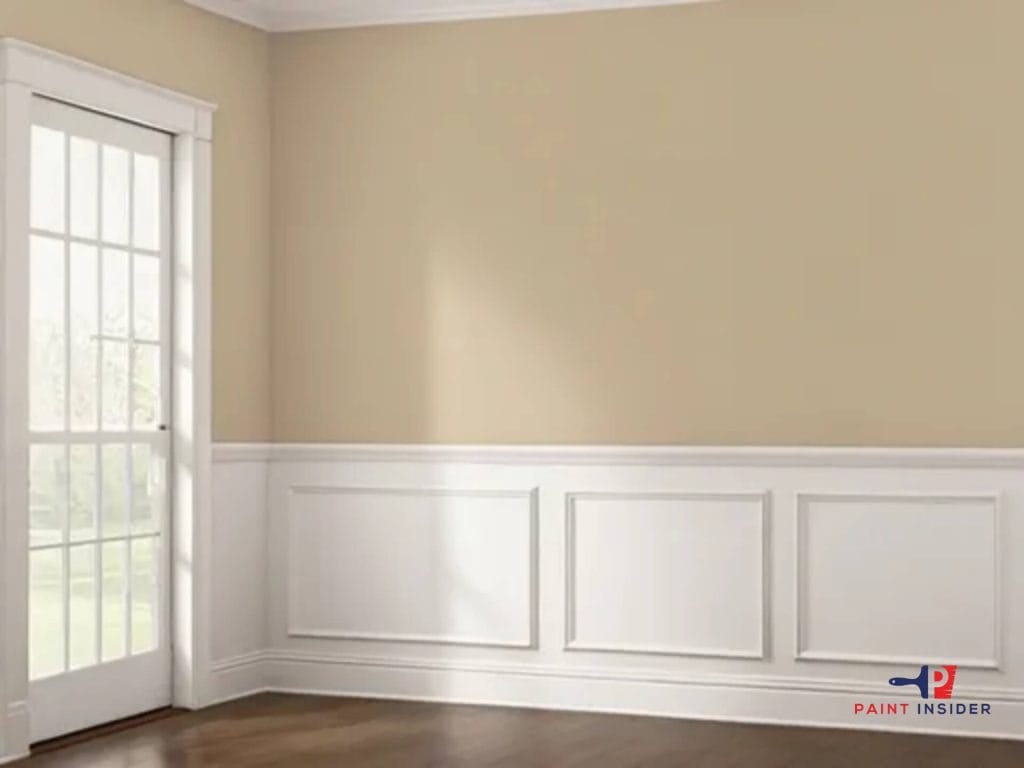
This color not only enhances architectural features but also complements various decor styles, from modern minimalist to rustic charm. Imagine how warm taupe could frame doorways and baseboards, adding richness that invites exploration of the entire room. Pairing it with natural wood tones or soft textiles amplifies its warmth while allowing artwork or furniture in vibrant colors to pop against this soothing backdrop. Ultimately, choosing warm taupe trim for white walls is more than a mere aesthetic decision; it’s about cultivating an atmosphere that feels both grounded and sophisticated
6. Dark Green Trim
Dark green trim against white walls is a unique choice that beautifully marries nature’s hues with refined elegance. This deep, rich color introduces a sense of drama and sophistication, creating a striking contrast that draws the eye without overwhelming the senses. When used thoughtfully, dark green trim can serve as an anchor in your design scheme, enhancing architectural details while allowing larger areas of white to remain crisp and airy.
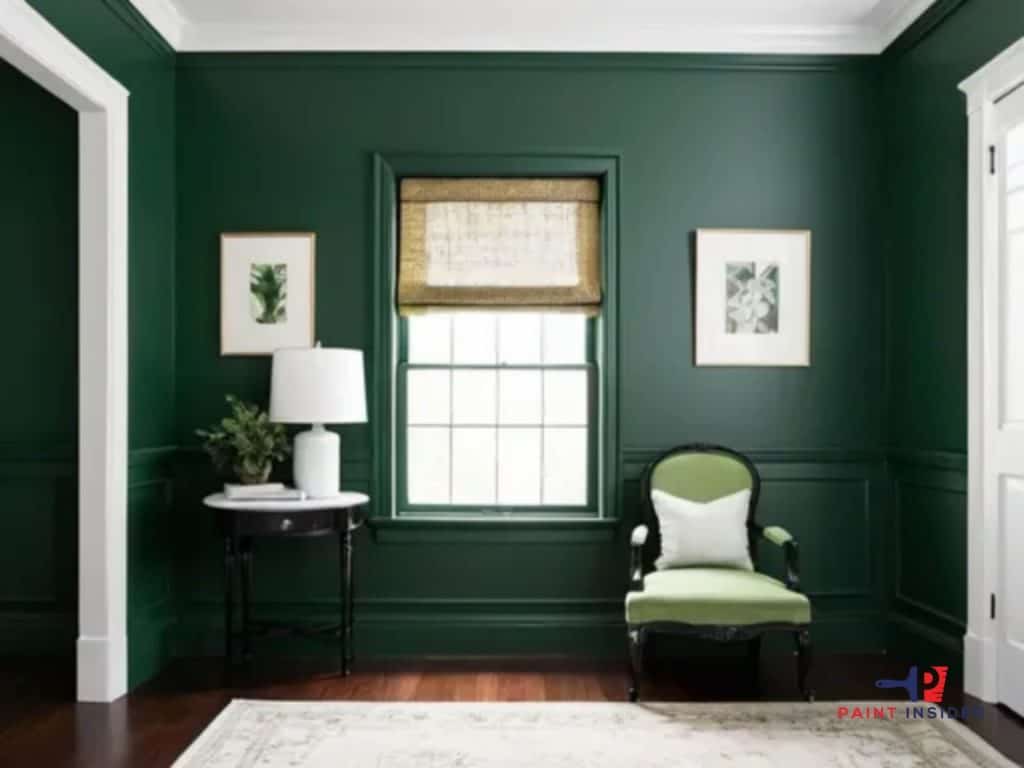
Embracing dark green trim also invites a refreshing connection to the outdoors. Imagine stepping into a room where lush foliage meets the stark brightness of white walls; it evokes feelings of tranquility reminiscent of forest escapes. This combination not only enriches your space but encourages creativity in decor choices. Think earthy accents like terracotta pots or wooden furniture that harmonize beautifully with both colors. Ultimately, using dark green trim offers more than just aesthetic appeal; it cultivates an atmosphere where relaxation and inspiration intertwine effortlessly.
7. Gold or Brass Metallic Trim
Choosing the right metallic trim for white walls can dramatically elevate the overall aesthetics of your space, and the debate between gold and brass is particularly alluring. Gold, with its warm tones, offers a luxurious touch that can evoke feelings of opulence. It beautifully complements modern or glam decor styles, adding an unexpected twist to a subdued color palette. When paired with crisp white walls, gold creates a high-contrast look that is both striking and inviting.
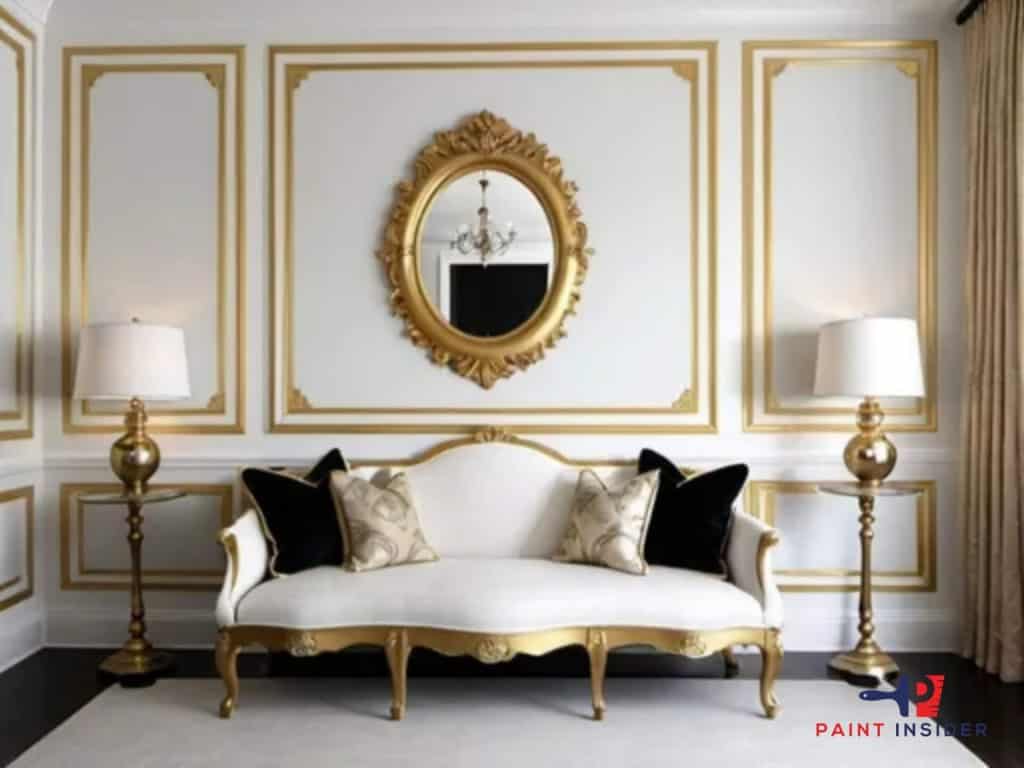
On the other hand, brass brings a sense of timeless sophistication that can soften the starkness of white walls without losing elegance. Its muted golden hue leans slightly antique and earthy, lending warmth altogether a fabulous match for rustic or vintage-inspired spaces. The subtle sheen of brass trim catches light in ways that enhance textural differences within your room, creating depth and intrigue while maintaining an airy feel essential for smaller areas.
Ultimately, selecting between gold or brass trim depends on your intended atmosphere; choose gold for bold glamour or opt for brass if you prefer understated warmth. Whichever path you pursue will reflect not only your personal style but also set the tone throughout your home turning simple white walls into canvases worthy of admiration.
8. Beige Trim
Beige trim for white walls would be a perfect idea with various design aesthetics, unlike stark whites or dramatic colors, beige trim introduces warmth and depth while maintaining a light and airy feel. The subtlety of beige creates an elegant transition between surfaces, allowing architectural details to stand out without overwhelming the room.
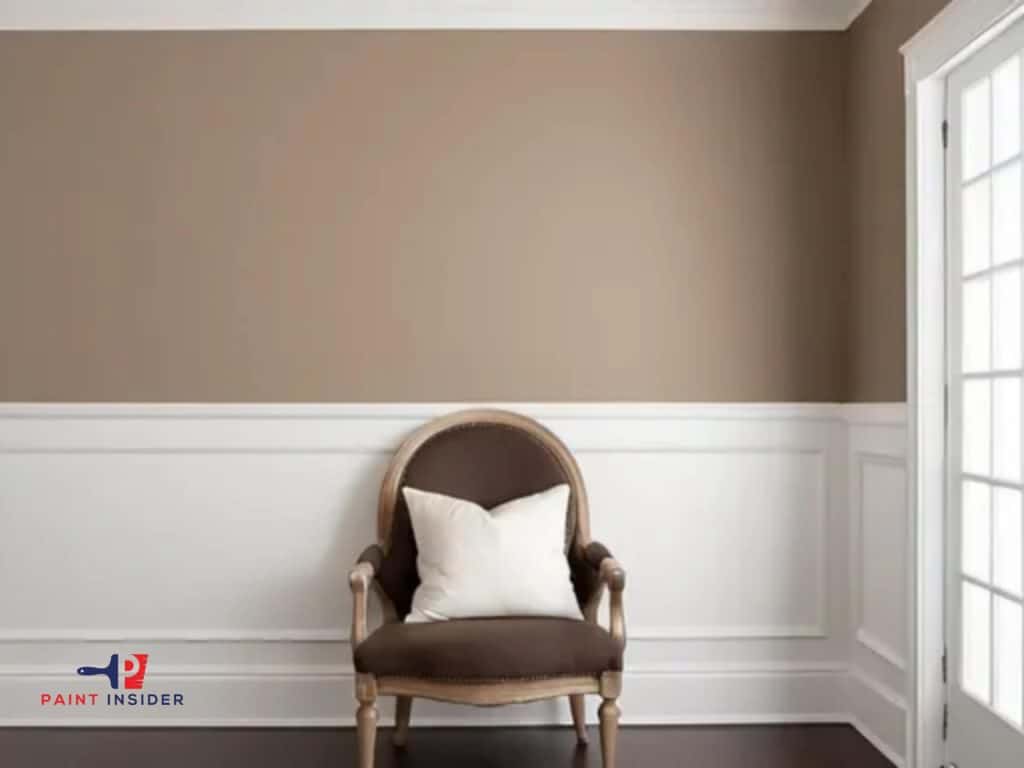
Using beige trim can enhance both classic and contemporary spaces, offering a neutral backdrop that complements furnishings and decor. It’s especially effective in rooms flooded with natural light, where the interplay of sunbeams on beige can evoke feelings of comfort and sophistication. Additionally, incorporating wooden elements or textured fabrics alongside this pairing elevates the overall ambiance creating a snug retreat that’s inviting yet stylish. So next time you ponder what color trim for white walls, consider embracing the understated charm of beige; it might be just what your space needs!
9. Dusty Blue Trim
Dusty blue trim for white walls strikes a harmonious balance between soft elegance and subtle sophistication. This combination invites a serene vibe into your space, turning stark whites into inviting canvases that breathe life and character. Dusty blue is an enchanting shade that marries gray with a whisper of pastel to add depth without overwhelming the senses, making it perfect for rooms where tranquility is key, such as bedrooms or cozy living areas.
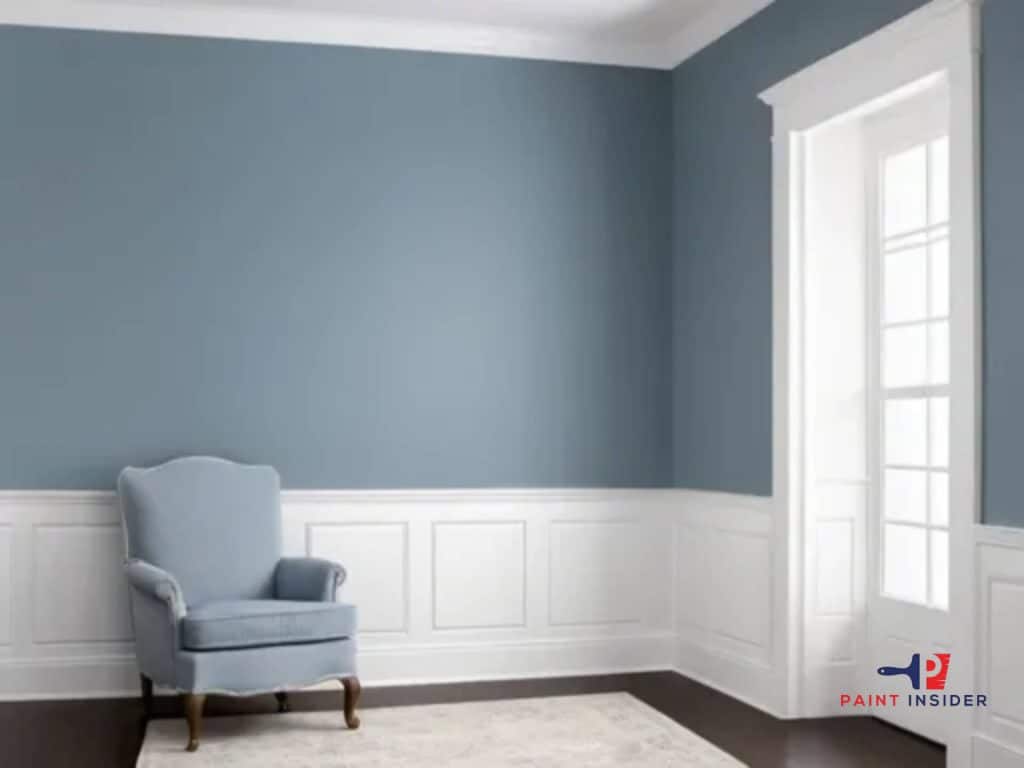
This color pairing opens avenues for playful accessories and decor elements. Imagine integrating warm wood finishes or rich gold accents alongside dusty blue; they create a striking contrast while keeping the overall atmosphere calm and cohesive. Whether you opt for wide baseboards or delicate crown molding in dusty blue, the nuance of this color can effortlessly enhance architectural details with flair. Embracing a dust-blue palette invites warmth to the starkness of white walls, transforming them into expressions of personal style rather than mere backgrounds.
10. Wood Stain or Natural Wood Trim
Choosing the perfect trim color for white walls, wood stain emerges as a compelling choice that can enhance the overall aesthetic of your space. The warmth of natural wood grain adds depth and texture, creating an inviting contrast against the clean backdrop of white paint. Whether you opt for a rich walnut or a light oak, stained trim complements various design styles from rustic to contemporary, making it surprisingly versatile.
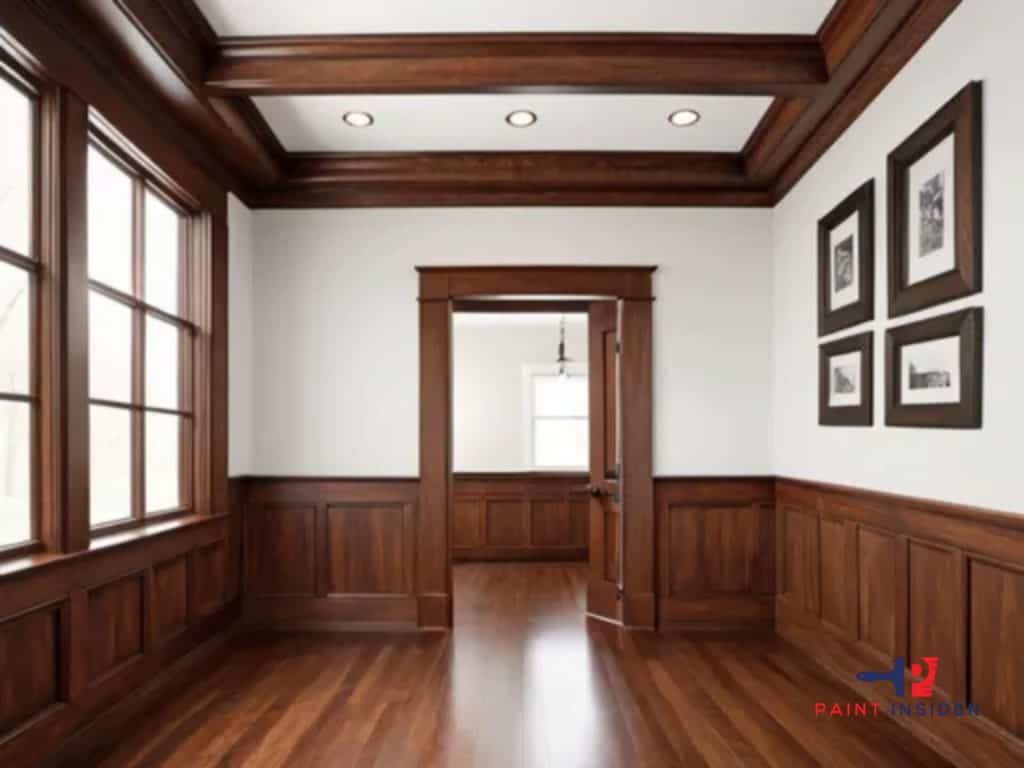
Incorporating wood-stained trim can also evoke feelings of coziness and comfort, often absent in stark white interiors. It softens edges and introduces an organic element that promotes tranquility. Pairing darker stains with cooler whites creates an elegant sophistication, while lighter stains harmonize beautifully with warmer shades of white a delicate balance that brings your design vision to life. By opting for a wood stain finish instead of traditional white or other colors, you’re not only embracing timelessness but also adding unique character to each room that reflects your personality and style choices.
Contrast vs. Complement: What Works For Trim Color?
When choosing the right trim color for white walls, understanding the relationship between contrast and complement is essential. Contrasting colors create a striking visual impact, drawing attention to architectural details and emphasizing the lines of a room. For instance, pairing crisp black or deep navy trim with white walls introduces a bold statement that can invigorate modern spaces. This high-contrast approach often works well in minimalist designs where you want elements to stand out.
On the other hand, complementary colors offer a more seamless harmony that enhances rather than competes with the existing decor. Shades like soft gray or warm beige can soften starkness while still providing enough differentiation to highlight trims subtly. This choice brings depth to a space without overpowering it; it invites viewers into an environment that’s both relaxing and visually appealing. Ultimately, selecting between contrast and complement involves considering not only aesthetics but also how you want to feel in that particular space whether energized by sharp contrasts or comforted by gentle harmonies.
Warm vs Cool Trim Colors Explained
When considering what color trim for white walls, the interplay between warm and cool tones can dramatically influence a room’s atmosphere. Warm trim colors, such as buttery yellows, soft creams, or terracotta shades, create an inviting ambiance that promotes comfort and coziness. These hues can soften stark white walls while adding a touch of richness and depth ideal for spaces designed to foster relaxation and connection.
Conversely, using cool trim colors like icy blues or crisp grays can evoke a more modern and airy feel. These shades provide a refreshing contrast to white walls, enhancing natural light while establishing a serene environment that feels open and spacious. Moreover, cool tones often work best in contemporary designs or smaller spaces where maximizing brightness is essential. Ultimately, the choice between warm or cool trim hinges on personal taste and desired energy; aligning your trim color with the intended mood of your space can lead to harmonious design choices that transform any room into an enclave of style.
The Impact of Sheen and Finish
The choice of sheen and finish can dramatically influence the perception of a space, especially when paired with white walls. A satin finish, for example, creates a subtle sheen that enhances depth while maintaining durability, making it an ideal option for high-traffic areas such as hallways or living rooms. When combined with warmer trim colors like soft creams or gentle taupes, satin finishes bring forth a sophisticated warmth that invites comfort without overwhelming the senses.
On the other hand, if you desire to make a bold statement, consider using semi-gloss finishes on your trim against crisp white walls. This juxtaposition not only accentuates architectural features but also adds a modern flair to traditional spaces. Opting for deep charcoal or navy blue for your trim can create striking contrast while ensuring the essence of sophistication is maintained. Ultimately, exploring different sheen empowers homeowners to transform ordinary interiors into personalized sanctuaries that reflect their unique styles and elevate everyday surroundings.
Tips for Testing Trim Colors
When testing trim colors against white walls, consider the lighting in your space as a crucial element. Natural light can dramatically alter how a color appears throughout the day. For best results, apply samples of potential trim colors and observe them at different times. Morning sunlight may reveal undertones you didn’t notice under artificial lighting, making this an essential step in your decision-making process.
Another effective technique is to create a mood board that synthesizes various design elements in your room. Incorporate fabrics, flooring samples, and other decor items alongside your chosen trim swatches to see how they harmonize with each other. This holistic approach allows you to gauge not just contrast but also cohesion within the entire visual palette of the room. Remember, what color trim for white walls isn’t just about aesthetics; it’s also about creating an emotional connection with the space by curating a balanced atmosphere that aligns with your vision for comfort and style.
Common Mistakes to Avoid with Trim
One of the most prevalent mistakes homeowners make when choosing trim for white walls is neglecting to consider the undertones in both the trim and paint colors. White walls can exhibit warm or cool undertones, which significantly influence how the trim color will appear. For instance, pairing a stark blue-white trim with warm cream walls can create a jarring contrast that detracts from the overall aesthetic. Instead, opt for trims that harmonize with the wall’s undertone; soft whites or creamy off-whites tend to complement warmer wall tones while cool grays are ideal for cooler shades.
Another common oversight is failing to account for architectural style and room function. A bold, dark trim might suit a modern loft beautifully, but it could overwhelm a small, traditional space by making it feel closed-in and heavy. Conversely, using too light of a trim in extensive open spaces can strip away depth and dimension. Consider not just personal preference but also how different finishes glossy versus matte interact with lighting throughout different times of day; these factors collectively influence visual intrigue and overall room balance. By accounting for undertones and style coherence, your space can achieve its fullest potential in inviting warmth and harmony through thoughtful use of trim colors.
Conclusion: Making the Right Choice
Selecting the right trim color for white walls is all about achieving the perfect balance between contrast and complement. Whether you opt for bold choices like black or charcoal, or prefer softer hues like gray and beige, the trim color can significantly influence the overall aesthetic of your space. From creating a modern and dramatic atmosphere to ensuring a warm and cozy feel, the options are endless. Ultimately, the best trim color depends on your design goals and personal style, ensuring that your white walls serve as a pristine canvas for your chosen accent.

